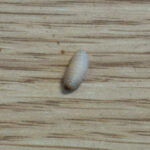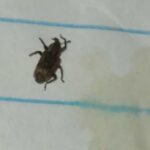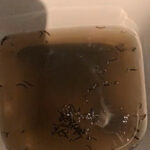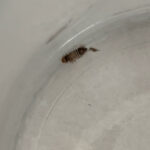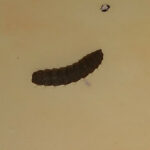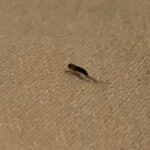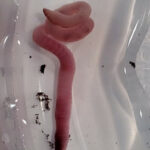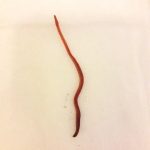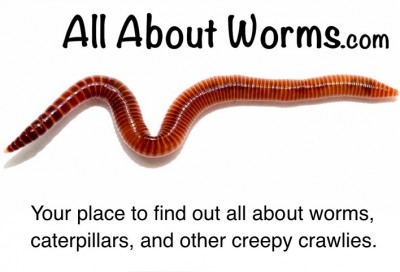
Clear, white, worm-like creatures are crawling on this reader’s palm tree and potentially causing damage to it, and he wants answers as to what is happening. “In my front yard I have a Queen Palm tree that is about fifteen years old”, he writes in his submission. “A couple days ago I noticed a brown liquid running down the side of the palm’s trunk and as soon as the sun goes down, I can see small white colored insects crawling in the brown liquid/sap. I was wondering if you might know what kind of insect is causing the problem and if you have any tips on how to treat my tree. Here are a few pictures. Thank you.”
Now, based on the research and sleuthing we have done, it seems like our reader might be facing two problems simultaneously. The larvae are possibly immature palm tree weevil larvae (though what species specifically we cannot be sure), which do, as their name suggests, infest palm trees. We specify that they are likely immature given the size of the larvae our reader found; typically palm tree weevil larvae are around an inch long and quie rotund. Palm tree weevils are a species of beetle, and it is their larvae that cause most harm to palm trees: they bore tunnels through the trunk, chew holes through the leaves, and cause structural damage to the tree. With that said, palm tree weevil larvae are most attracted to palm trees that are already unhealthy, and they are very much attracted to palm tree sap.
It is possible that the palm tree weevil larvae are causing the oozing liquid (the red palm tree weevil larva has been known to cause this), but it is just as possible, if not more likely, that the secretion is a sign of something else. This is where we kind of get into muddy waters: we are equipped to identify and explain matters relating to worms and worm-like creatures, but we are definitely not experts on palm trees and their problems. That said, from what we have gathered, it is possible that the palm tree is experiencing a fungal infection, which can cause ‘bleeding’. If this is the case, or our reader wants to learn if this is the case, he should contact a professional who can help him with this problem. Fungal infections should be taken seriously, as they can kill trees.
To conclude, we think it’s possible that our reader found immature palm tree weevil larvae crawling about in the sap. It is equally possible that the palm tree was unhealthy prior to this infestation, and it is the sap that drew the larvae to the tree in the first place. If this is the case, then we would assume that the adult beetle laid her eggs on or near the palm tree, as it knew it would provide sustenance for its larvae. We hope this helps, and we wish our reader, as well as his palm tree, the very best.
All About Worms is always free, always reader-supported. Your tips via CashApp, Venmo, or Paypal are appreciated! Receipts will come from ISIPP Publishing.
You might also find these guys interesting!





